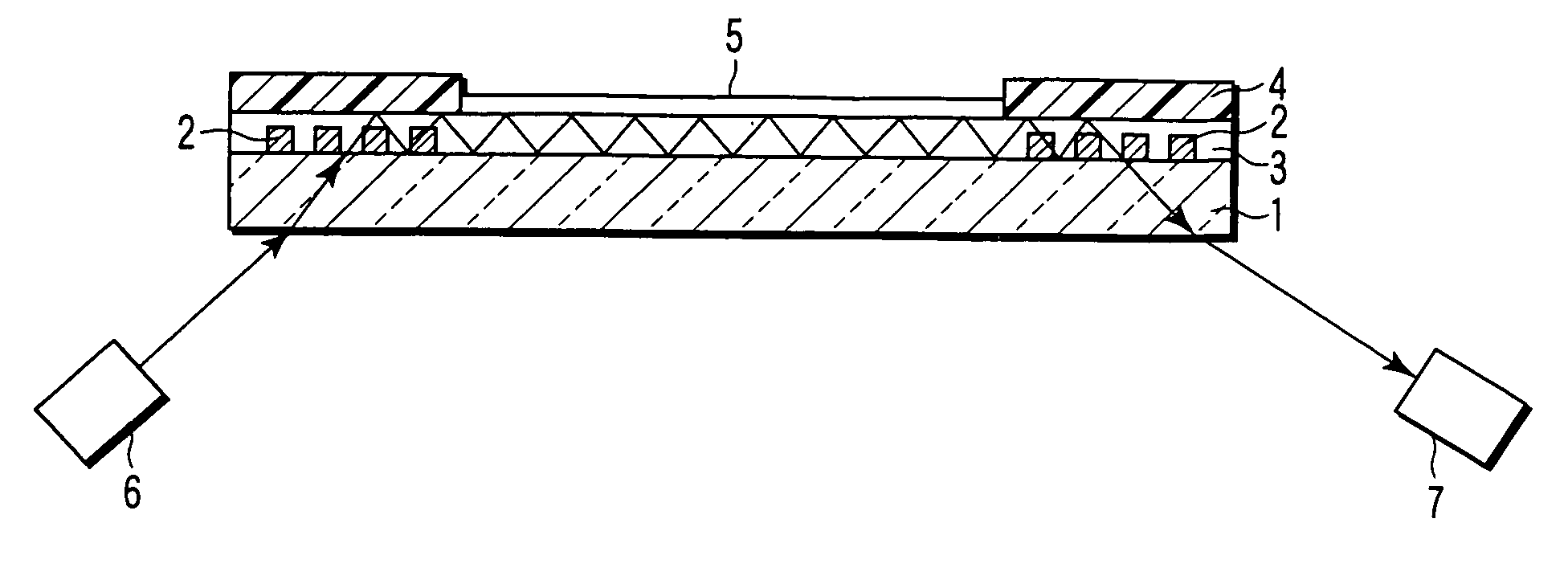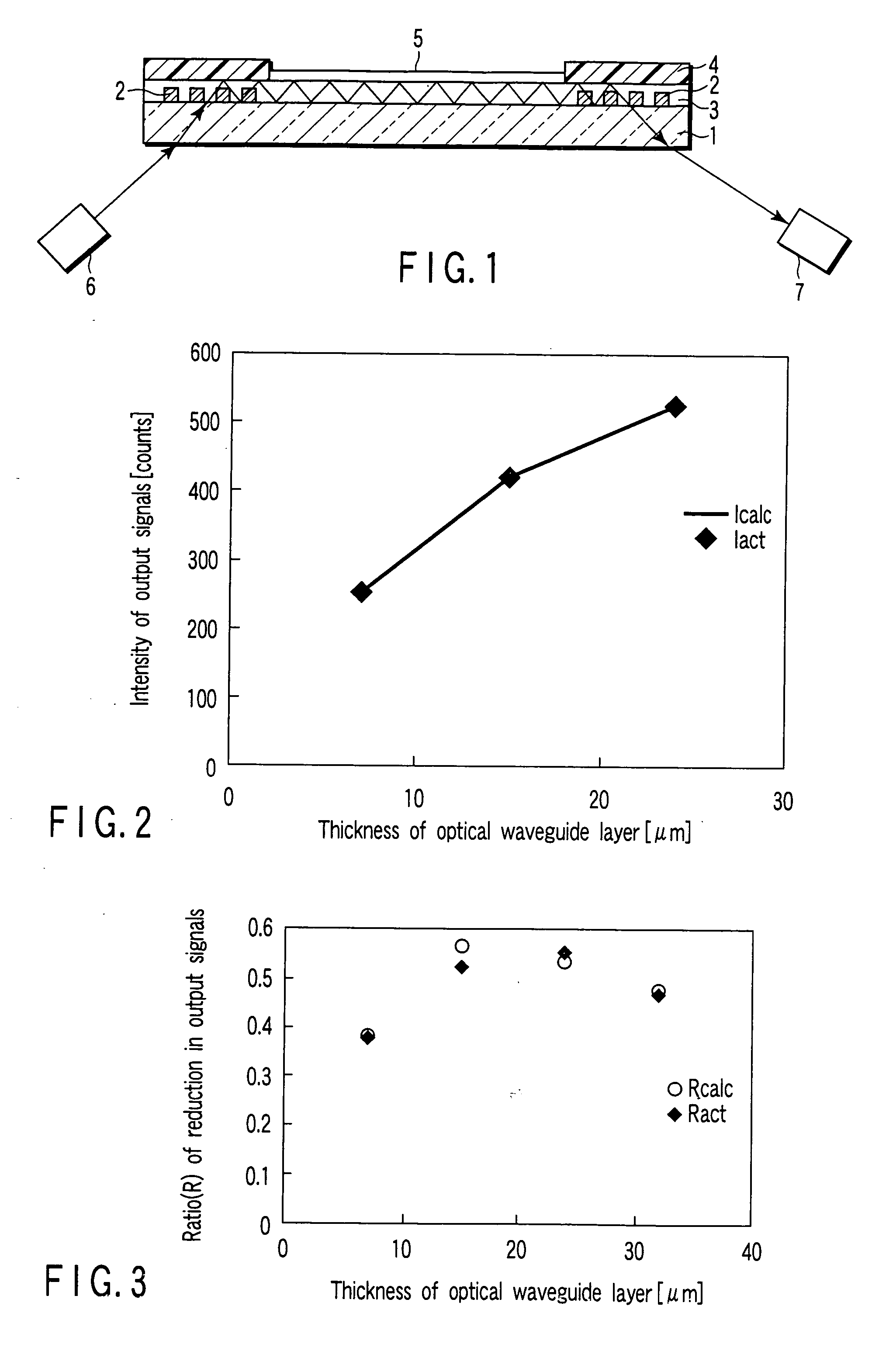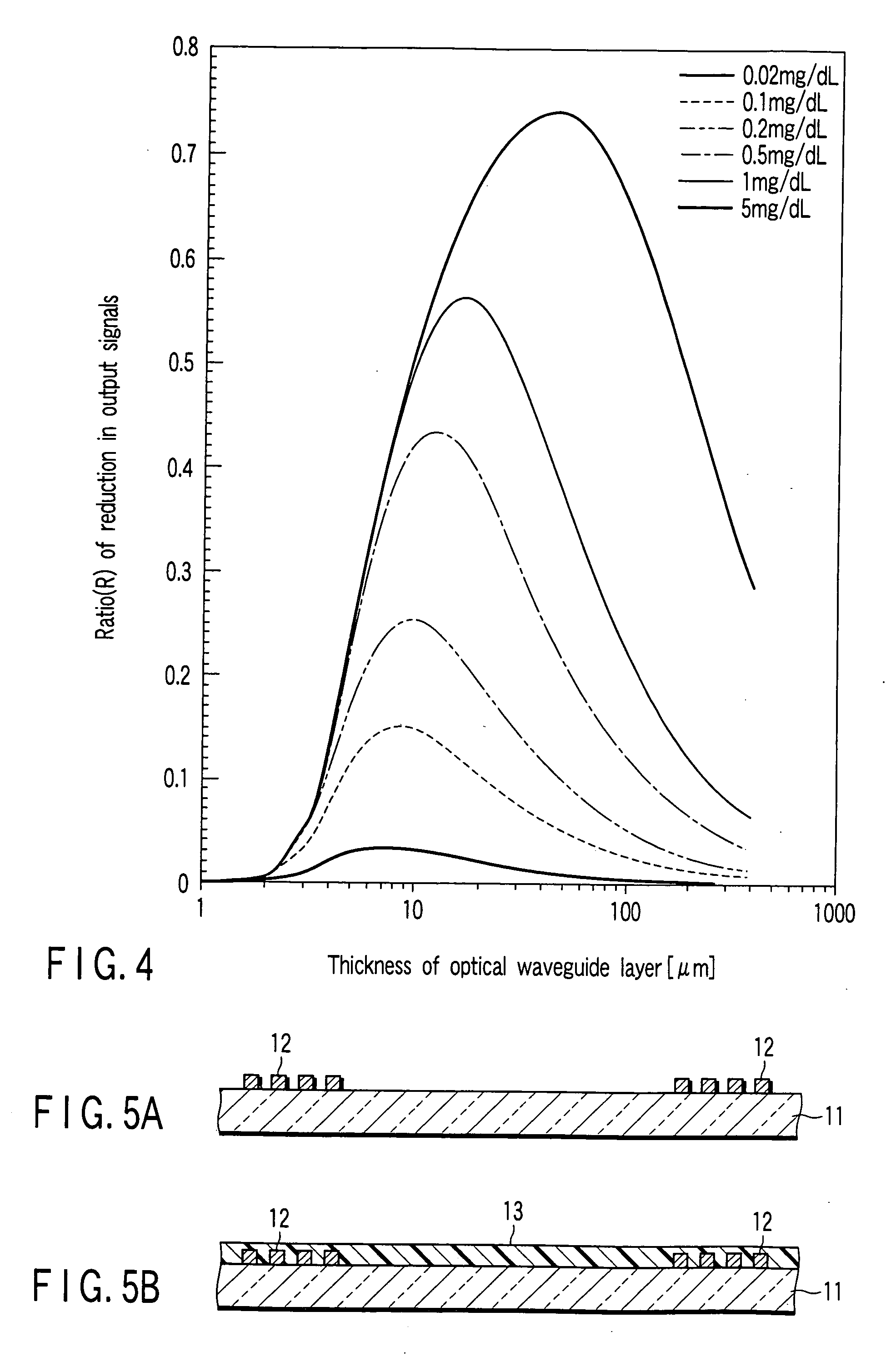Optical waveguide type biochemical sensor chip and method of manufacturing the same
- Summary
- Abstract
- Description
- Claims
- Application Information
AI Technical Summary
Benefits of technology
Problems solved by technology
Method used
Image
Examples
first embodiment
(First Embodiment)
[0039]FIG. 1 is a sectional view of an optical waveguide type biochemical sensor chip according to a first embodiment.
[0040] A pair of gratings 2 are formed in each region in the vicinities of both ends of a main surface of a transmittable substrate 1 made of glass (non-alkali glass) or quartz to impinge light beam into the substrate 1 and emit the light beam. These gratings 2 are formed of a material (for example, titanium oxide) having a higher refractive index than the material constituting the substrate 1.
[0041] An optical waveguide layer 3 is formed adjacent to the main surface of the substrate 1 on which the above grating 2 is formed, so as to be in close contact with the main surface. This optical waveguide layer 3 is made of a polymer resin having a higher refractive index than the substrate 1 and has a uniform thickness designed to be in the range from 3 to 300 μm.
[0042] A protective film 4 is formed adjacent to the surface of the optical waveguide laye...
second embodiment
(Second Embodiment)
[0087]FIG. 6 is a sectional view of an optical waveguide type biochemical sensor chip according to a second embodiment.
[0088] A pair of gratings 12 are formed in each region in the vicinities of both ends of a main surface of a substrate 11 made of glass (for example, non-alkali glass) or quartz to impinge light beam into the substrate 11 and emit the light beam. These gratings 12 are formed of a material, for example, titanium oxide, having a higher reflectance than that of the substrate 11. An optical waveguide layer 13 which is formed of a polymer resin having a higher refractive index than that of the substrate 11 and has a thickness of 3 to 300 μm is formed on the main surface of the substrate 11 including the above gratings 12. A protective film 14 made of a material (for example, a fluororesin) which has a low refractive index and does not react with a regent is formed in each vicinity of both ends of the optical waveguide layer 13 which corresponds to the...
example 1
[0113] A titanium oxide film of 50 nm in thickness was formed on a principal plane of a non-alkali glass substrate having a refractive index of 1.52 by sputtering titanium oxide having a refractive index of 2.2 to 2.4. Then, the titanium oxide film was selectively removed by lithography and dry etching (RIE) to form a grating. In succession, a heat-curable resin solution was applied to the principal plane of the glass substrate including the grating by a spin coater and baked to form an optical waveguide layer having a thickness of 25 to 35 μm and a refractive index of 1.57. In succession, a fluororesin was formed on the surface part of the optical waveguide layer which corresponded to the grating by screen printing and dried to form a protective layer.
[0114] Then, the substrate was cut into pieces having the dimensions of 17 mm×6.5 mm to make chips. In succession, the region of the optical waveguide layer which was positioned between the protective films was irradiated with excime...
PUM
 Login to View More
Login to View More Abstract
Description
Claims
Application Information
 Login to View More
Login to View More - R&D
- Intellectual Property
- Life Sciences
- Materials
- Tech Scout
- Unparalleled Data Quality
- Higher Quality Content
- 60% Fewer Hallucinations
Browse by: Latest US Patents, China's latest patents, Technical Efficacy Thesaurus, Application Domain, Technology Topic, Popular Technical Reports.
© 2025 PatSnap. All rights reserved.Legal|Privacy policy|Modern Slavery Act Transparency Statement|Sitemap|About US| Contact US: help@patsnap.com



